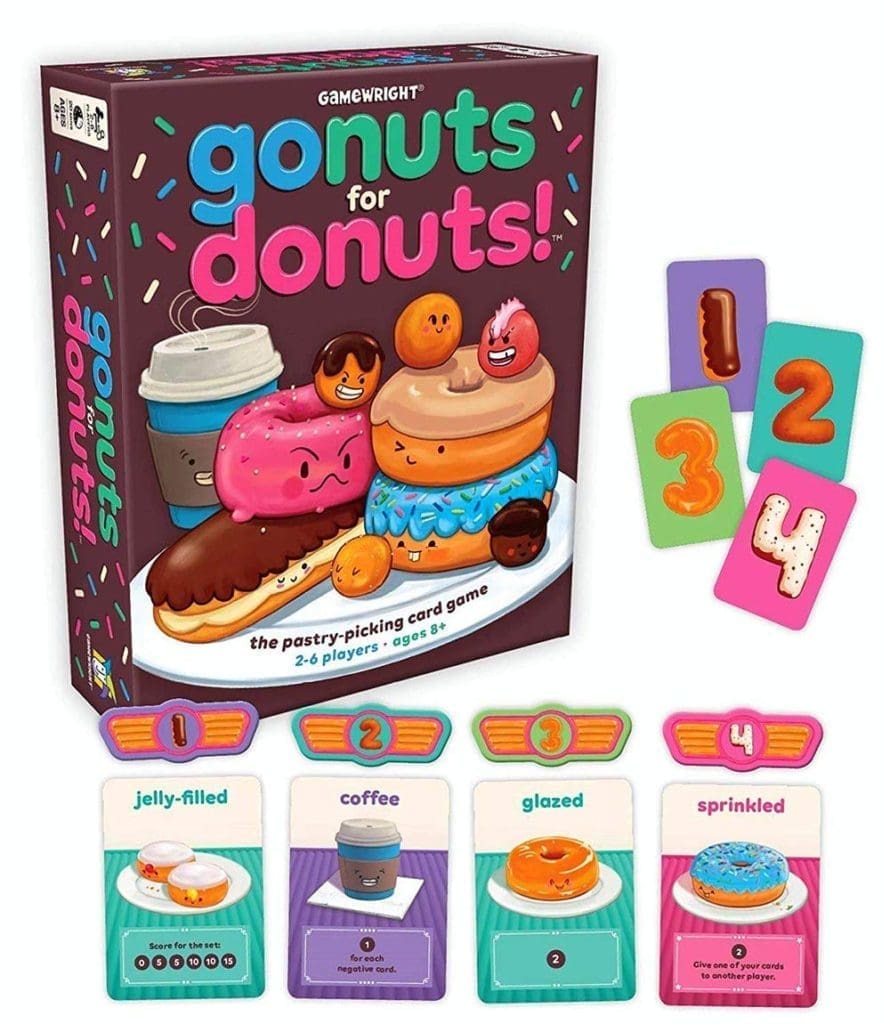
This strategy card game from Gamewright is a favorite of my students just because of the fun illustrations on the cards. They love collecting doughnuts! It is quick to set up, easy to learn, and leads to a lot of talk and laughter during play. To win this game requires use of some strategy to collect sets and maximize scoring options. Not only do you have to think about which cards will benefit you, but you have to make deductions about what other players will want to do and predictions about their next move.
Game Play
The dealer lays out numbered cards on the table equal to the number of players plus 1. Each player has a corresponding set of number cards. When the game starts, the dealer places a doughnut card under every number on the table. Everyone chooses which doughnut card they would like to have and holds out their corresponding number card face down. On the dealer’s go, everyone flips their card to reveal the number. If a player chooses a doughnut that no one else chose, he gets to keep that card. If more than one player chooses the same card, no one gets to keep it and it goes into the discard pile. Cards that no one chose remain as options for the next round. Continue until there are no more doughnut cards.
Each type of doughnut has a different point value and/or special power. Some cards score straight points, some require collecting others in a set to be worth more, some give points based on how many\few cards you have or how many types of cards you have. Others are worth no points at all or even negative points. However, they come with a special power such as selecting any card from the discard pile.
Math Skills Taught
I use this strategy card game mostly as a warmup to a tutoring or class session to practice strategy and develop critical thinking skills in making predictions and deductions. However, scoring requires computation. The cards have both positive and negative points. Depending on the child’s level you can approach these as addition and subtraction or positive and negative numbers. If you want to use the game within a specific lesson, I have successfully used the set building cards to teach input output tables. I have also used the doughnuts to represent fractions as parts of a set. You could also tally or graph the different kinds of doughnuts.
Other Notes
You can play with anywhere from 2-6 players. The cards are color coded and allow for taking some of them out for smaller numbers of players.
Game play takes about 20 minutes.
The rules are easy to learn and follow and there is a doughnut guide with a picture and description of every card.
It is truly accessible and fun for all ages. It’s fantastic for a family game to get everyone thinking and no one frustrated. Even preschoolers can play though they won’t be able to score their cards. However, teens and adults enjoy it as well.
